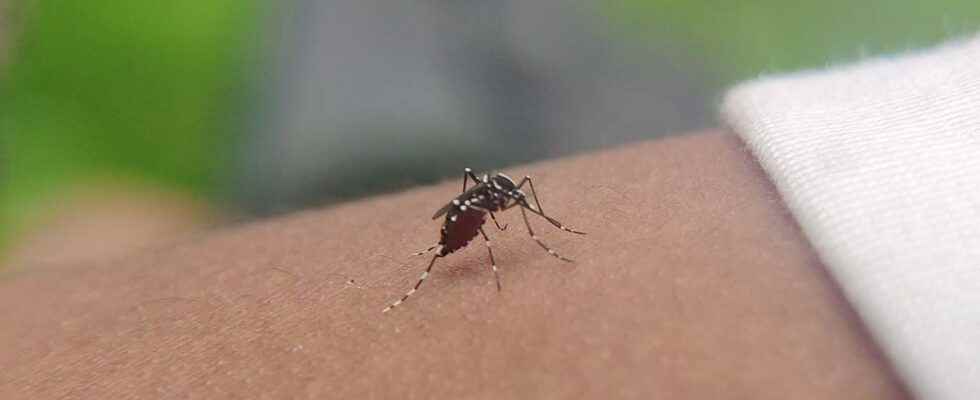Published on
Updated
Reading 2 mins.
Now well established on French territory, the tiger mosquito is becoming more and more resistant to insecticides. Because it can transmit various tropical diseases, experts warn of the risk of epidemics and call for this risk to be prevented now.
Capable of transmitting chikungunya, the Zika virus or dengue fever, the tiger mosquito continues to gain ground. Last summer, 65 indigenous cases (people infected in mainland France) were reported, leading experts to sound the alarm now.
Tiger mosquitoes detected in 70 departments
According to the website Mosquito vigilance, nearly 70 departments are colonized or about to be colonized by the tiger mosquito, i.e. nearly 67% of the territory. A worrying finding according to some experts interviewed by The Parisianwho call for action against the proliferation of this insect.
“2022 is a pivotal year where we have taken another step in risk“, explains Marie-Claire Paty, vector-borne disease surveillance coordinator at Public Health France, to Parisian.
On paper, tiger mosquitoes seem less threatening – they have a limited flight range around homes (about 150 meters) – but as the expert points out: “they get into the cars and thus progress on the territory”.
The problem ? These insects can transmit infectious diseases such as chikungunya, the Zika virus or even dengue, which can lead to severe complications such as heart failure or even death.
Of the 65 cases observed in France last summer, fortunately none developed a serious form. But the more cases there are, the greater the risk of severe cases. This is why the experts want to prevent this risk now before the hatching of the eggs in the first heat.
Destroy spawning grounds and remove stagnant water
Faced with the risk of an epidemic, the right actions must be taken now.
- All stagnant water must be removed (saucers, gutters, flower pots, tyres, etc.), as these are the favorite places for mosquito larvae, which like to develop there.
- It is also necessary to think of making the cans of recovery of rainwater inaccessible to the mosquitoes (cover them with a mosquito net or a fabric) and to take care of the good evacuation of rainwater.
- Finally, any garden needs to be cleared. Hedges and tall grass, as well as plant debris, are indeed the resting places of the tiger mosquito.
Public Health France (SPF) specifies that dengue is back in Guyana, with a new strain of the virus identified called DENV-3. This reappearance (the strain had not been observed for 15 years on the territory) alerts the regional health agency because “there is no population immunity”.
